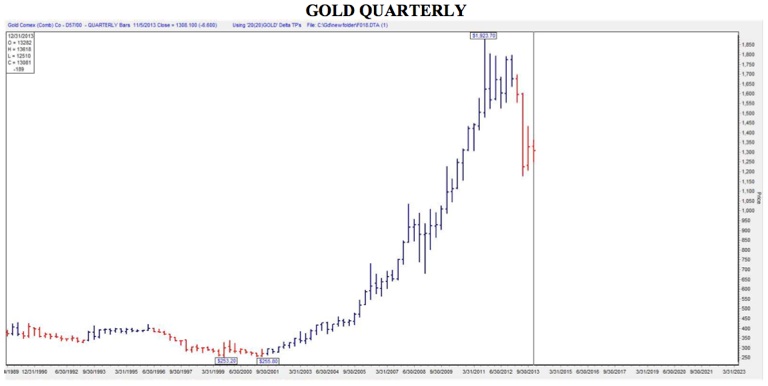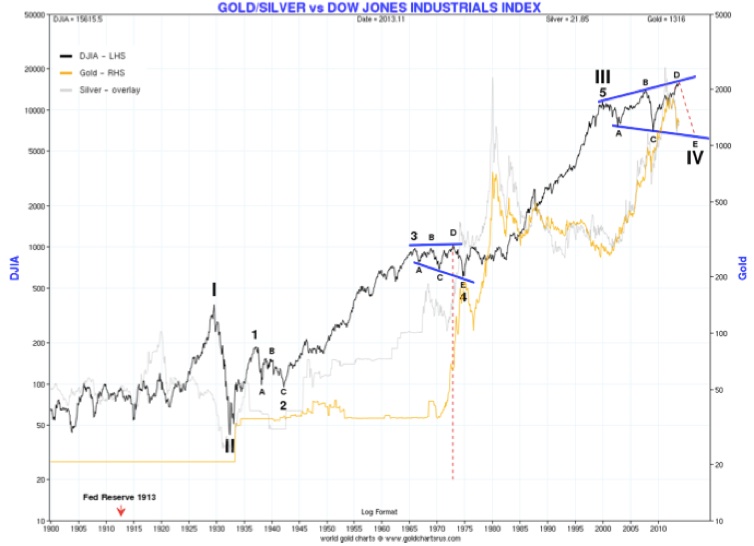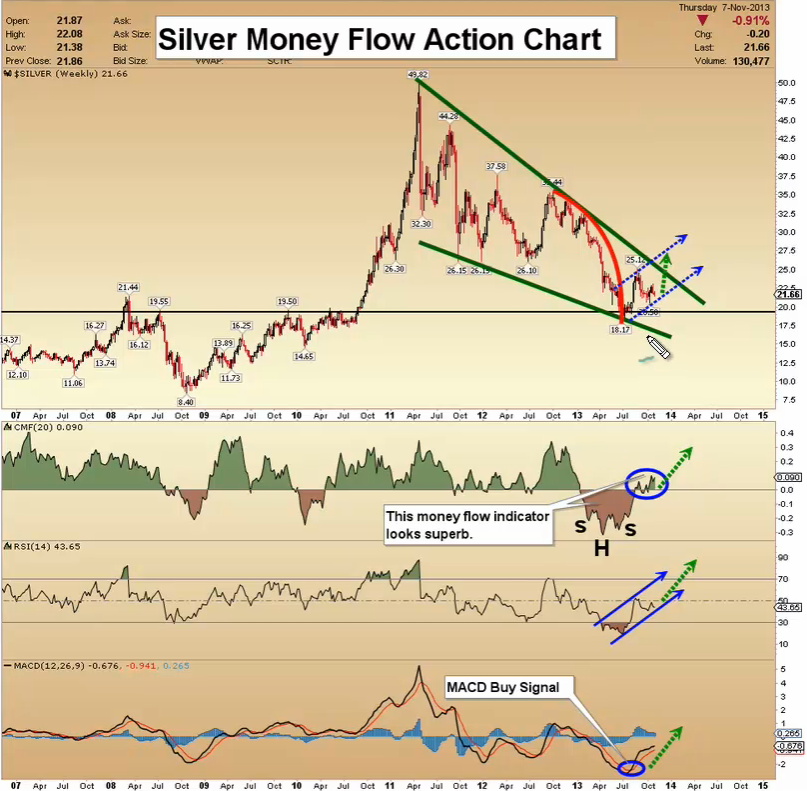Stocks & Equities
Over the past year I have noticed that Cameco (CCO) will make an appearance every few months in the technical and fundamental research that comes across my desk. This week it happened again, with one particular technical analyst making the case for the third time in 12 months as to why the stock is poised to rise to interim highs if it can just break through resistance in the low 20’s. (CCO currently trades near $20). This kind of research is focused on the shorter-term. As a result, when things don’t unfold in a timely manner, repeating the initial call is common practice unless there has been something dramatic to change the viewpoint of the technical analyst.
In addition, there have been a number of fundamental analysts, as well as one of the few newsletter writers that I actually like, who have all made a very compelling long-term case for buying the stock.
The long-term story is fairly simple. The world’s energy needs can’t be met through fossil fuel sources and alternative (green) sources continue to be extremely disappointing at this stage. As a result, relatively clean nuclear energy will be the eventual choice, especially for current energy-importing countries that don’t appear to have potentially dazzling shale deposits to be discovered and tapped.
So, why is CCO stuck in a range? (See chart above).
One word: Fukushima.
The incident in Japan still resonates with the public. In fact, it is still allowing for the press to publish stories that border on extremism. This week, there was a story that highlighted a speech by David Suzuki who stated that if another earthquake of greater than 7.0 were to hit Fukushima right now, the West Coast of North America might have to be evacuated. While there has not been a rush of scientists scrambling to back up Dr. Suzuki’s claim, the mood is sufficient to let the story stand without a whole lot of rebuttal.
So, it will take time for this issue to pass. Eventually, tough choices will have to be made and pragmatism will take charge. At this stage, the cost and benefits of more nuclear energy will have to be given a fair hearing. CCO should look a lot more reasonable and may be able to break the tether to its current trading range. But, waiting for that to happen also has its costs.
Cameco Corporation is not held in the McIver-Jasayko Model Portfolios as of November 8, 2013. Comments about these investments are not intended as advice and do not constitute a recommendation to buy, sell, or hold.
The opinions expressed in this report are the opinions of the author and readers should not assume they reflect the opinions or recommendations of Richardson GMP Limited or its affiliates. Assumptions, opinions and estimates constitute the author’s judgment as of the date of this material and are subject to change without notice. We do not warrant the completeness or accuracy of this material, and it should not be relied upon as such. Before acting on any recommendation, you should consider whether it is suitable for your particular circumstances and, if necessary, seek professional advice. Past performance is not indicative of future results.
Richardson GMP Limited, Member Canadian Investor Protection Fund.
Richardson is a trade-mark of James Richardson & Sons, Limited. GMP is a registered trade-mark of GMP Securities L.P. Both used under license by Richardson GMP Limited.


{mp3}mcbuscomnov8fp{/mp3}

Four reasons to waste your time with the deeply historic, deeply human value ascribed to gold.
People love to debate, but sadly sometimes it crosses a line and turns argumentative. That’s what is happening right now with the debate over gold.
There have been several high-profile articles, most recently in the Wall Street Journal, saying you should eliminate gold as a worthwhile part of your portfolio, primarily because of this year’s lower price.
Against that idea, many bloggers and private investors, wondering why gold priceshave fallen, say that it shouldn’t have dropped, that there must be some conspiracy driving down prices when money-printing and our still-weak economy should be driving gold higher. But that still puts current price performance front and center in the debate over whether it should or shouldn’t feature in your portfolio. So it misses several key points about why gold is uniquely valuable as an investable asset.
We’d like to look here at some of the common arguments now offered for why gold should not figure in your investment strategy. Yes, working at BullionVault, the physical gold and silver exchange, we’re biased. But there are also people who always say gold doesn’t warrant your investment dollars.
To have any intelligent understanding of your own position, you need to welcome debate. That way you can challenge your own opinions and, if you find they’re correct, improve your arguments, too, such as whether gold investing continues to warrant attention.
1. Gold Does Not Yield Anything
When you buy any commodity outright. you can no longer deposit it with a bank or investment company to earn interest. If you are looking to yield a dividend or interest, then physical gold ownership will not yield anything. Yet that is only half the story.
Gold ownership yields security for the investor, the type of security a person seeks from insurance. It is the only physical form of insurance that exists to counterweight your investments in bonds and stocks, and that is also a liquid, easily traded asset. Gold is also noncorrelated with those more “mainstream” markets, meaning that its price moves independently of where other investment prices are heading. So the goal for most investors in holding gold is first as a safety net for their other assets. This metal has held value for thousands of years, and will hold value for thousands more.
2. Gold Is Worth Only What the Next Investor Will Pay for It
This statement is weak from the onset. There are no stocks, bonds, commodities or goods that are worth more than the next person will pay. That being said, gold has something that the others do not. Gold is 100% transparent, in that, unlike other easily traded investments, it is only one thing: a pure and precious rare commodity that requires little space for storing great value.
This commodity has acted as money for thousands of years. In fact, after World War II, the Bretton Woods agreement used gold to bring stability and sanity to the world’s currency markets once more. If that history of human use doesn’t give intrinsic value to gold, why would you give that title to any other asset?
People had their life savings in Lehman Brothers stock. Other people invested in mortgage-backed securities or were holding Argentine bonds or got sold the claims ofBernard L. Madoff Investment Securities LLC.
Stocks and bonds, though there are many facts available about them, are never 100% transparent. It is much like a hiring a baseball player. You may have his statistics and you may place him in the perfect spot on the best team in the league. Yet he may perform poorly due to an unknown injury or a problem with the change of venue or any other number of unknown reasons. This is the same for stocks and bonds. Though we have their statistics, we never know when some problem may cause some of these instruments to fail.
3. Gold Is Neither a Good Hedge for Stocks, Nor Inflation
Anyone looking at the 1980s and ’90s and concluding that gold is a poor inflationhedge misses the point. You didn’t need an inflation hedge when cash in the bank paid 5% above and beyond the rate of inflation each year, as it did on average for U.S. and U.K. savers for the last 20 years of the 20th century.
But gold doesn’t make a good hedge for stock market investments either, according to a long-running thread of comment. The frequent comparison is usually to the stock market overall, or the Dow Jones industrial average. Never mind that gold and stocks have, over extended periods, gone in opposite directions. That measure is not a just number to use, because the stock indexes frequently change. This is also true of the overall market, where stocks are delisted if they underperform or go bankrupt. If these types of stocks were kept on, how would the indexes and averages have changed? The stock market of 1989 did not have the same listed companies as that of 1996, 2000 or 2013.
In contrast, the gold of 1989 was the same gold of 1996, 2013 and even 2000 BC. Gold does not change, and its supply cannot be expanded (or reduced) at will. This is why gold functions so well as a form of exchange and transfer of value. It holds value due to its permanent unchangeable form. World history has shown us again and again that in the final analysis; only gold, out of all investable assets, holds value in catastrophic situations.
You can lose value owning gold if you buy high and sell lower, but you never lose it all. You could easily pick out a point in any chart of the stock market where an investor could have bought and then another time where you may have sold and lost money. There is no point to this kind of example, because it never speaks to an individual’s overall performance with their assets. They may have liquidated their stock at the low price because they needed the cash to invest in a particular business or real estate opportunity. All assets including gold have to be looked upon as part of a strategy for the investor and not as independent pieces of life’s asset management puzzle.
4. Gold Is an Article of Faith, Not Rational Investing
Some people denigrate gold to a relic of the past in terms of its economic importance. The most recognized of today’s detractors is perhaps Nouriel Roubini, the famed NYU economist who repeats John Maynard Keynes’ cry of the 1930s that gold is a “Barbarous Relic”. Still others go further, saying that choosing to own investment gold is anti-social. The argument is that there is no longer any need for gold as a form of exchange, nor as a store of value. Governments and central banks have done away with the need for gold. So apparently, gold’s only value today lies in the jewelry and electronics trades.
In addition, other analysts write about gold being a faith-based investment and mock it as a type of religion. There are certainly those who invest on faith, and they can be loud, giving the impression that investors in gold are extreme. But this can also be said about the defense of the U.S. Dollar. That currency in the end is only a piece of paper that has no other use than that ascribed by the government. If you put fire to a dollar bill it will turn to ashes and float away. But if you put fire to gold, at the right temperature, you get a liquid metal that not only is useful to the arts but important in the electronics and high-technology industries.
“We may one day become a great commercial and flourishing nation,” wrote George Washington, the first president of the United States of America, on the subject of paper money in a letter to Jabez Bowen, Rhode Island, on Jan. 9, 1787. “But if in pursuit of the means we should unfortunately stumble again on unfunded paper money or similar species of fraud, we shall assuredly give a fatal stab to our credit in its infancy.
“Paper money will invariably operate in the body of politics as spirit liquors on the human body. They prey on the vitals and ultimately destroy them.”
It is difficult for those in power to try to overcome this truth, embodied by all of recorded economic history. And it becomes more ludicrous as governments also hold gold bullion in vast amounts.
The modern central banking system, now more than 100 years old, may seem to shape this perception. Yet in the last decade, central bankers themselves, albeit in Asia and other emerging economies, have been significant buyers of the yellow metal. Western governments as a group have stopped selling gold.
Why? Economic chaos causes distrust among governments and central banks, leading those in power to seek out avenues to strengthen their position with other parties. The position central banks look for to strengthen their balance sheet and ensure their place in the global economy is gold. The United States rose to dominance worldwide alongside its dominant gold reserves. Now becoming a market economy, and hoping to become the next big global economy, China is also building its central bank gold reserves. It becomes obvious that gold has a very deep, very human value, ascribed to it by history and by all major powers today.
Value isn’t the same as price, of course, which explains, perhaps, how gold investing remains such a mystery to some people.
Adrian Ash is head of research, and Miguel Perez-Santalla is vice president of business development for BullionVault, the physical gold and silver exchange founded a decade ago and now the world’s No. 1 provider of physical bullion ownership online. There you can buy fully allocated bullion already vaulted in your choice of London, New York, Singapore, Toronto or Zurich for just 0.5% commission today.


By a 60-Year Market Veteran –
With continued uncertainty in global markets, a 60-year market veteran sent King World News an absolutely incredible piece discussing the terrifying big picture. He also included some fantastic commentary to go along with seven key charts and illustrations. Below is six-decade market veteran Ron Rosen’s extraordinary piece.
November 7 (King World News) – “The Terrifying Big Picture”
It’s easy to see that ever since the year 2000 gold bullion has been in a bull market and the S&P 500 has been in a megaphone pattern bear market. Gold has dramatically increased in price while the S&P 500 has done nothing but go up and down. The Fed’s QE’s, plus a twist, are placed on the chart of the S&P 500. They inform us of when the Fed believed it had to goose the economy and the markets in order to keep them from collapsing. OK, but what’s next? Will gold keep going up? Will the S&P 500 head down again?

Well, we now have a pretty good idea that the Fed will continue doing QE’s as far into the future as they can see….
That may or may not be very far. The general expectation is that if the Fed continues to do QE’s, the Stock averages will continue to move up. We know that gold is in a long-term bull market. The S&P 500 and the DJIA, if left on their own, would normally begin a leg E collapse at this time (see right hand side of chart below).

Continue reading the Ron Rosen piece HERE













